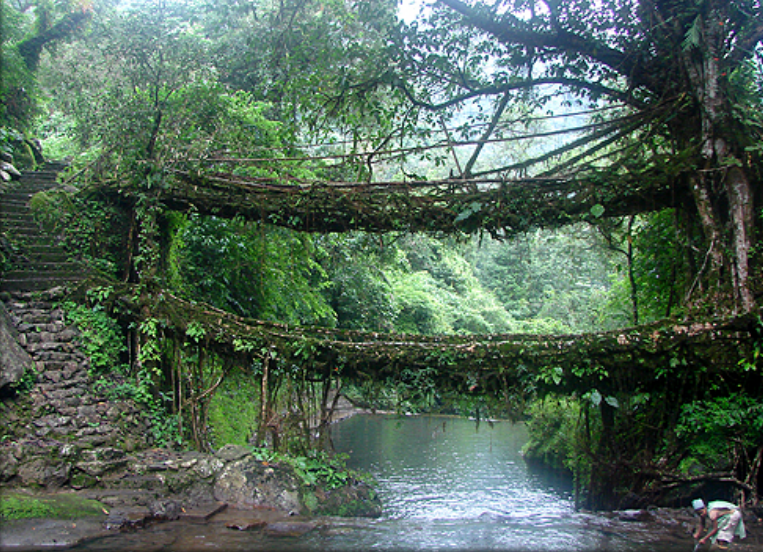The Living Root Bridges of Meghalaya
By :
The Living Root Bridges of Meghalaya
March 14, 2022
India is a land of cultural diversity. This diversity is especially evident when comparing different States and Union Territories of the country. Each region has a distinct variety of plantations, food, traditions, clothing, and literature that unifies and forms the diverse culture of India.
North-East India is evidently one of the most linguistically and culturally diversified regions of the nation. Comprising the “Seven Sisters”, North-East India boasts the States of Arunachal Pradesh, Assam, Manipur, Meghalaya, Mizoram, Nagaland, and Tripura.
Of these, it is believed that Meghalaya’s culture and heritage are deeply associated and influenced by mother nature. The State has rich and vibrant biodiversity with a variety of flora and fauna. Waterfalls, bridges, forest trails, brimming rivers are the elements of magnificent Meghalaya.
The Living Root Bridges of Meghalaya—a bridge made of tree roots that only gets stronger with time and use!

Living Root Bridge, Nongriat, Meghalaya
Meghalaya is known for its dense forests and living root bridges that are believed to be built by the tribes of Khasi (a tribe living in the eastern parts of Meghalaya). Khasi tribe is known for its self-sufficiency and its ability to nurture an ecosystem. Living Root Bridges are one of this tribe’s legacies. This is a pedestrian bridge made of the roots of living trees – mainly used for crossing rivers. These bridges connect to remote places and help in sourcing raw materials like wood and water for survival in the dense forests. Living root bridges are intricately planned and built to provide accessibility.
The unique structure of the Living Root Bridge
The Living Root bridges seen throughout the East Khasi Hills of Meghalaya embody the self-sufficiency of the Khasi tribes and their relationship with forests. The structure of the bridge is entirely made from tree branches, trunks, and roots. The process begins with placing young pliable aerial roots Ficus Elastica trees in hollowed-out trunks of the Areca Catechu tree (type of palm tree). These trunks provide essential nutrition and protection from the weather to the young roots and also serve as a root guidance system. This is supported by a bamboo framework along with the entire structure. Over time, as the aerial roots increase in strength and thickness, the Areca Catechu trunks are no longer required. Dead load in the form of stones, timber planks, leaves, and soil is added to plug gaps and to weight test the living root structure. Meghalaya’s humid climate and pedestrian movement along the bridge contribute to soil/dead load compaction. Over time (15 to 30 years), the root structure becomes strong enough to support substantial weight without the bamboo framework. Unlike the concrete bridges, Living Root bridges become stronger and more resistant with time and use.
Learnings from such heritage
Sights like the Living Root bridges showcase the skilled craftmanship of tribes of India and their self-sufficient approach towards life. Future generations derive inspiration from these ancient techniques and strive for embracing a greener future.